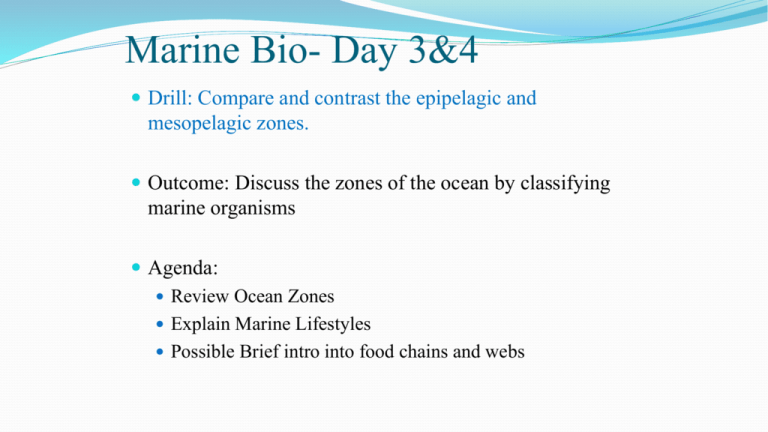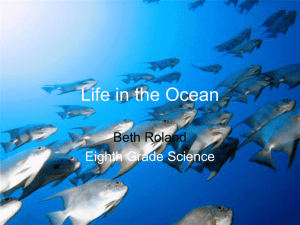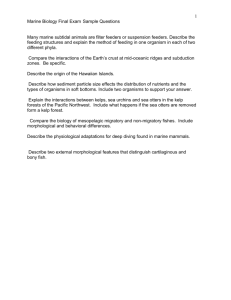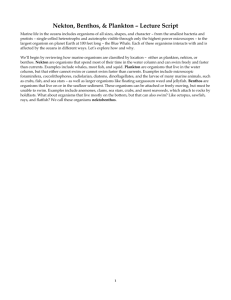organisms - Old Mill High School
advertisement

Marine Bio- Day 3&4 Drill: Compare and contrast the epipelagic and mesopelagic zones. Outcome: Discuss the zones of the ocean by classifying marine organisms Agenda: Review Ocean Zones Explain Marine Lifestyles Possible Brief intro into food chains and webs Pelagic Zone Marine Lifestyle Marine life is incredibly diverse. Scientists use groups and subgroups based on common physical characteristics to discuss them. Three types of lifestyles include: 1) Plankton are the group of organisms that exist adrift the ocean currents. ^ Neuston are those plankton that float at the surface, for example Portuguese Man-of –War. Plankton Marine Lifestyle cont. 2) Nekton are the organisms that swim, from small invertebrates to large whales. Most of the seas’ predators are Nekton. The majority of Nekton are vertebrates. Marine Lifestyle cont. 3) Benthos are organisms that live on or in the bottom. They can move about or be sessile. Sessile organisms are attached to the sea floor. Marine Lifestyle cont. Benthos are divided into three categories: 1) Epiphauna – are those animals, such as crabs, that live on the sea floor. 2) Infauna – are organisms that are partially or completely buried in the sea floor… such as clams, sand dollars, tubeworms, and sea pens. Most Infauna are either “deposit feeders” or “suspension feeders.” (Deposit feeders feed off detritus down from above. Suspension feeders filter particles (mostly plankton) suspended in the water for food.) Epiphauna, Epiflora, or Infauna? Infauna – Sea Pens Epifauna – Sea Star Infauna – Sand Dollar Epifauna – Crab








